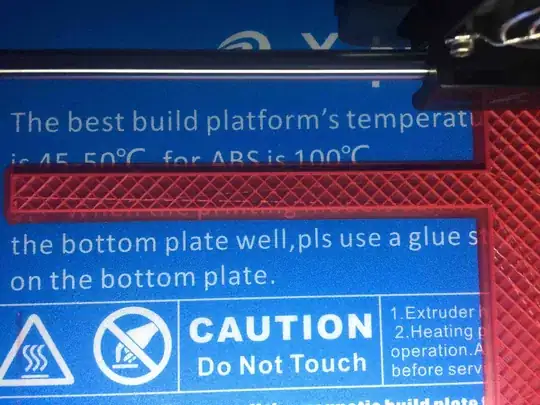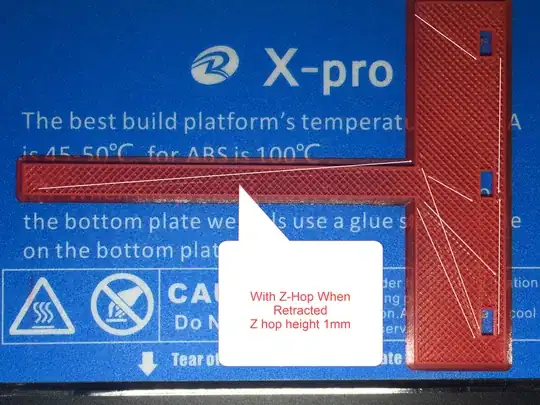I'm a 2-week newbie at 3D printing, working on a new Qidi Xpro machine (that is solid and one that I like). So, I do not want to believe that this issue is caused by my printer itself. I'm hoping that my settings have something to do with it.
The problem is all the filament lines (travel lines, I think) that start at a sharp corner and go somewhere else. Most often, the lines go to another sharp corner but sometimes can intersect the middle of a side. See the image below for many examples. I have drawn white lines parallel to the unwanted filament lines in case they are hard to spot.
The unwanted lines also appear in the infill underneath the surface lines. They look like porous infill grid lines since they should probably not be there, and they do not get a full load of filament extrusion. You could easily say "Oh, they are the result of a "leaky" nozzle with poor retraction, but I think it's more complicated than that. I have done a full load of retraction tests and calibrations to optimize retraction lengths and speeds to minimize hairs.
Here is an image showing the problem:
My Cura settings seem reasonable for PLA: bed 50C, nozzle 200C, print speed 40mm, travel speed 90mm (100-110 makes no difference), retraction length 8.5-9.5mm (makes no big difference), retraction speed 35mm, infill: density 20% (line, grid, makes no difference), z-seam set to random, retract at new layer = enabled.
I want to believe that something in my settings is telling the machine to extrude a 1/2 or 1/3 amount of filament when it starts those travels from sharp corners to somewhere else. But, I have not been able to solve the problem.
Everything else works fine in a print (IMHO) except for another problem that I described here. I thought I fixed that one, but I saw it occur on the image shown above (inside the infill, under the surface that is shown above).
Does anyone have any ideas that I might try to solve the problem? Thank you.
UPDATE: Here's an image with Zhop when retracted enabled at zhop height 1mm. This is an infill picture, so it cannot be directly compared to the surfaced original. But, the unwanted trails are all still there (although very thin). Maybe 2mm hop height will do it. I will run another test.
UPDATE:
I ran a second test with zhop 2.0mm, but without success. The problem was still there. (Retraction on, 8.5mm, min distance 0.8mm). Here is a comparison picture. I think the gcode is definitely telling my printer to do what it does, because the problem is not just a random leak. I think I'll try a different slicer in hopes that it generates different gcode.
UPDATE ON COMBING
Oscar pointed me to the Cura "combing" setting in his comment below. He nailed teh problem perfectly. Combing means "don't retract, and ooze as you please while you move in a straight line to the destination." That's exactly what I've been showing in my images.
The default for Cura combing is enabled. As a newbie, I didn't know enough to turn it off. Worse yet, if combing is enabled ("don't retract"), it prevents "Zhop When Retracted" from zhopping. So, all my zhop experiments did exactly nothing and had zero effect because no zhopping was occurring. After I disabled combing, then for the first time in my life I actually saw what a zhop looked like. (And thus I can assert that zhopping was not happening with combining=enabled.)
Here is an image of my new "perfect" prints thanks to Oscar's pointer on combing. The left two prints have combing off, zhop off. They are almost perfect, inside and out. The infill walls are generally solid and smooth (20% infill) and without the globs and gaps in the image on the right (with combing on).
As a closing note, I think the combing setting was probably also responsible for the problem of missing infill grids in the corner, as described in this question. The problem doesn't happen with combing off. My theory is that with combing on (as it was for that question), the oozing pulls filament out of the nozzle during the travel, so there's not enough filament at the destination to bite and bond to the corner. So, turning combing off solved 3 problems for me: the awful surface lines, the unwanted trails in the infill, and the missing infills in the corner. It also greatly improved the quality of the infill walls, too.





